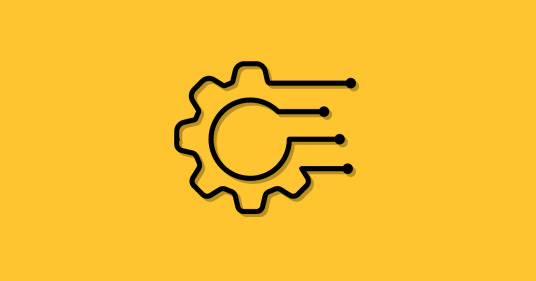General
Cybersecurity and Artificial Intelligence: Threats to Companies
Artificial intelligence is evolving so rapidly that keeping up with its capabilities can be challenging. Once considered a technological novelty, it has now become a true revolution, significantly improving the operations of many businesses. Companies increasingly embrace a variety of AI-based solutions, and it's not surprising. AI provides unprecedented efficiency, performing tasks in seconds that previously required hours of work. Of course, hackers have also discovered the immense potential in this tool. How do they leverage AI for their purposes? What cybersecurity threats for businesses arise from the development of artificial intelligence? What can be done about it? Check it out.
Artificial intelligence assists in designing more sophisticated cyberattacks
They exploit the almost limitless data processing capabilities of AI to plan and execute deliberate attacks. They can rapidly assess the vulnerability of specific users to cyber threats and then tailor their actions to maximize effectiveness.
Artificial intelligence proves useful to hackers, particularly in social engineering, primarily with phishing. With its support, it is effortless to craft a convincing, credible, and realistically looking phishing message. AI easily adapts language and communication style to match the impersonated sender's characteristics. It can also generate fake images to deceive the victim and persuade them to share corporate data.
Cybercriminals, aided by artificial intelligence, swiftly generate so-called deepfakes. This involves merging and overlaying static and moving images onto a video, allowing, for example, the real-time replacement of a filmed character's face with another. Deepfakes appear highly realistic, which is why they increasingly accompany spear phishing and whaling phishing. Hackers impersonate individuals in high-ranking positions, initiating video calls with someone from the company. They then demand the disclosure of crucial data or a substantial transfer of funds. They may also provide information to manipulate stock prices. The person on the other side remains unsuspecting, as they see someone they know well.
How to deal with this? In attacks exploiting human error, regular education of the entire staff is crucial. You never know which person in the company a hacker will target. That's why all employees, without exception, should have basic knowledge of cybersecurity, be able to recognize threats, and respond appropriately. Therefore, it's worth taking advantage of the free recording from the IT security training for employees.
Criminals use AI to create more effective software
An essential tool in a hacker's "work" arsenal is software that infiltrates the victim's IT systems, often as a result of phishing. This software assists in capturing corporate data (if the criminal intends to monetize the information on the black market) or encrypting it (if the criminal plans to extort a ransom in a ransomware attack). Thanks to artificial intelligence, it is possible to design malicious software that not only penetrates corporate devices but also modifies its operations to evade detection by protective software.
Artificial intelligence facilitates the creation of extremely aggressive viruses that cause severe damage to computers. These viruses not only cleverly bypass antivirus software and attack its code but also, unnoticed by anyone, wreak havoc at an unimaginable pace, impossible to achieve for ordinary viruses.
How to deal with this? Minimize the negative effects of a ransomware attack by regularly creating backups. Additionally, it's worthwhile to invest in cyber threat insurance, covering the following losses: civil liability for data leaks or loss; defense costs and fines for privacy law violations; the cost of data restoration and the profit lost by the company.
Thanks to AI-supported automation, cybercriminals operate more quickly
By leveraging automated processes, hackers can operate more quickly and on a significantly larger scale. What used to be done manually and took a considerable amount of time is now delegated to artificial intelligence, which completes the task in a matter of moments.
Thanks to such enhancements, criminals generate a vast number of automated methods for creating and disseminating cyber threats. For example, phishing campaigns can be automated, allowing credible and often well-personalized messages to reach hundreds of recipients through various effective channels.
How to deal with this? It is valuable to create and implement a comprehensive cybersecurity strategy that prepares the company for various types of threats. Certainly, a well-planned defense will be aided by the insights from the expert webinar recording, "Cybersecurity for Management."
The use of artificial intelligence in a company poses certain dangers
A significant number of companies utilize the capabilities of AI in their daily operations, such as automating processes or analyzing reports. Unfortunately, employees and members of the management may not always be aware of the vast amount of data that artificial intelligence collects and processes. This data can be intercepted by hackers and exploited for their purposes.
ChatGPT stores the history of both user queries and its responses. If unauthorized individuals gain access to login credentials, valuable information can be leaked. This is already happening on a large scale. In May 2023, criminals intercepted 26,000 profiles. In June 2023, over 101,000 infected devices were identified, containing authentication data for ChatGPT.
How to deal with this? When using ChatGPT, disable the history feature to prevent it from being stored on your account. Ensure password security in the company to minimize the risk of leaks. Additionally, take advantage of Telescope, a free IT security audit that you can conduct independently. The audit identifies vulnerabilities and weaknesses in security and provides recommendations to enhance cybersecurity, ensuring it is effective and compliant with regulations.
Furthermore, we encourage you to regularly visit our blog and our Facebook page or LinkedIn profile, where we share valuable information on cybersecurity in the workplace.
Until next time!
Sagenso Team





-Nov-09-2023-12-16-07-6027-PM.png)
.png)
